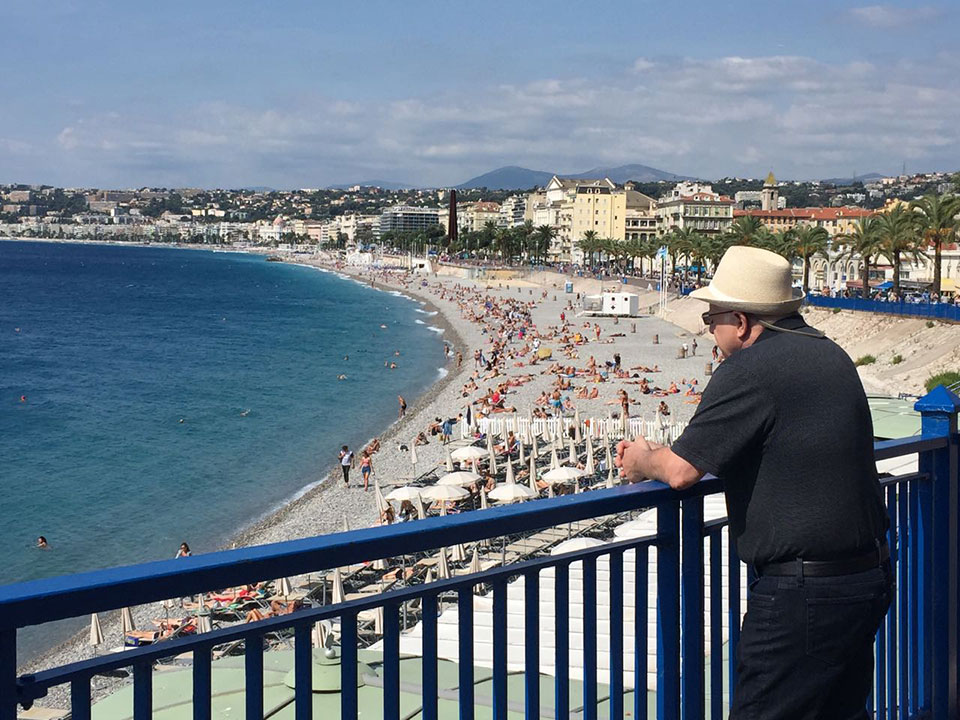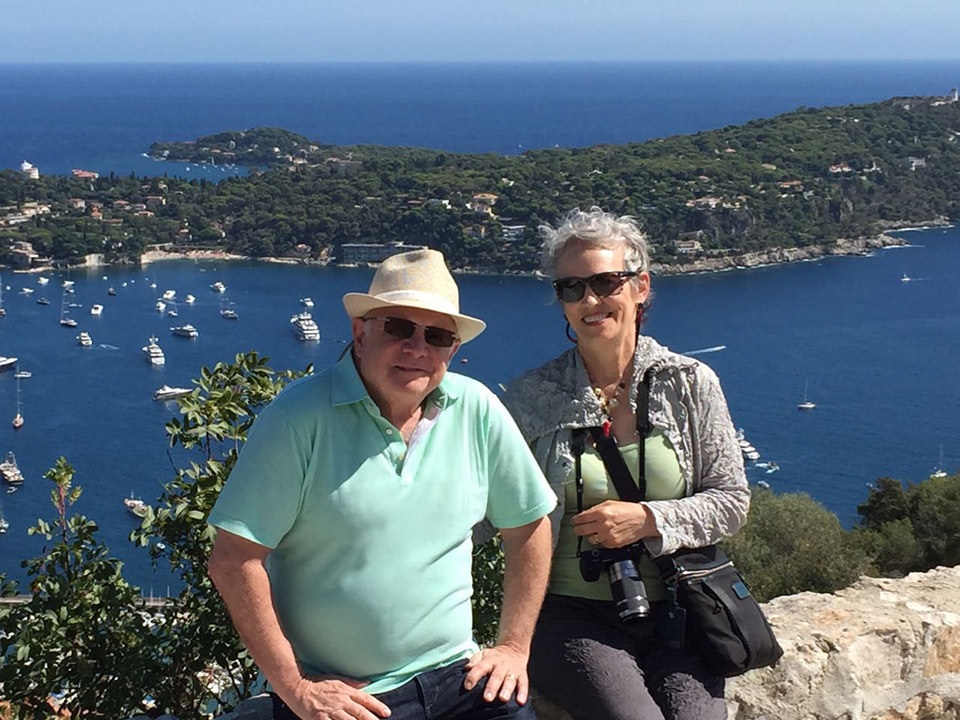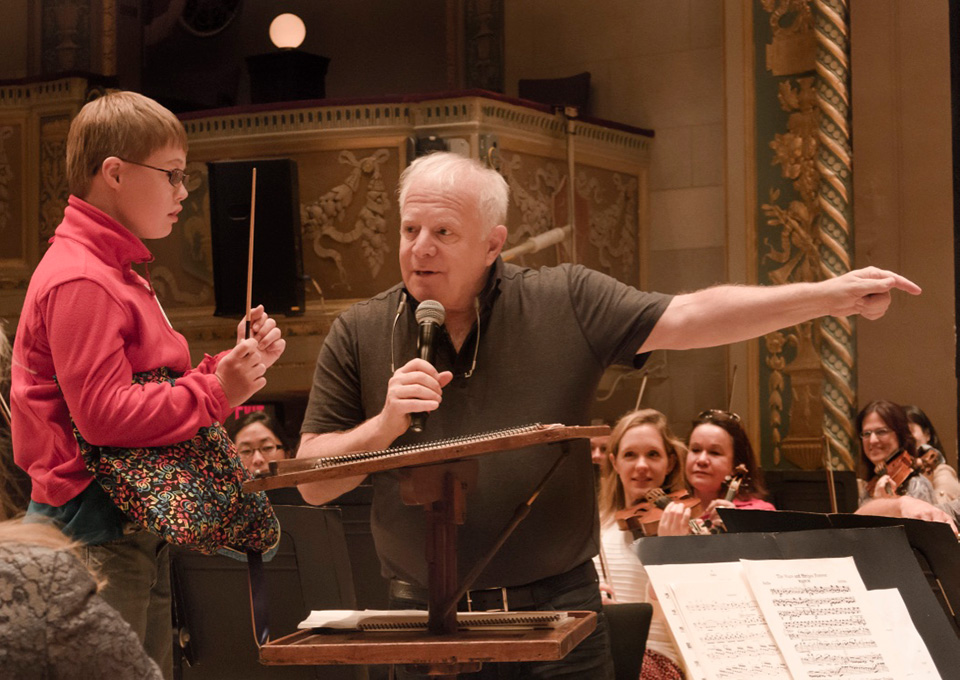It did not start out well.
Upon arrival in Lyon, we were preparing for a concert at Côte St. André, our annual pilgrimage to the birthplace of Hector Berlioz. The program was a bit unusual in that it contained two rarities by the festival’s namesake, plus the Beethoven Ninth.
I had never heard of, much less conducted, either the Scène Héroïque or the Death of Sardanapalus. After studying them, it was pretty clear why. These works are both for chorus, soloists and orchestra. One of them contains music that would later be used in Roméo et Juliette. But neither is truly representative of the French master’s style.
After going through the repertoire with the orchestra alone, I had a rehearsal with the choir. Starting with the Beethoven, there were no problems. Then we did the Sardanapalus piece, and when I asked to begin the other work, the chorus was mystified. It seems that no one bothered to tell them that they were needed for this 18-minute piece!
My immediate reaction was to simply do the short work followed by the Beethoven and have no intermission. Considering that the concert was the following day, there seemed to be no other option. No parts existed for the voices.
What actually occurred was quite remarkable. The librarians put together, very quickly, the choral music and distributed it to the singers, who spent the better part of five hours learning the piece. But the only opportunity to find out if it would be good enough was at the dress rehearsal in Côte St. André. And this was only a one-hour session.
We ran through it, and although the chorus was tentative, it was clear that they were trying their very best. So we ran it again and decided it was worth attempting at the concert. The likelihood of me ever doing this or the other piece again is marginal, but there was a certain degree of excitement in pulling a proverbial rabbit out of a hat.
The following week was devoted to more Berlioz. Although we are not recording everything he wrote, as we are doing with Ravel, we needed fillers for the Romeo and Juliet recording and a compilation disc of the remaining orchestral music. Over the course of three days, we completed four of the overtures, all of which are virtually unheard these days.
Keeping with the Shakespeare theme, the King Lear will be added to Romeo. We recorded Beatrice and Benedict last season, so that album is now complete. There is one other overture that would qualify. The Tempest is a piece that also utilizes chorus and introduces, for the first time in history, a piano within the orchestral fabric. We will have to wait to get around to it, and besides, it would not have fit lengthwise into the Romeo release.
Waverley was the work that helped jump-start my career. This piece was the opening work at my NY Philharmonic debut in 1974, when I jumped in for Riccardo Muti. Back then, I had to learn it overnight, but this time around I could properly prepare. For an Opus 1, it is a good start for the composer, but one senses Berlioz stepping into the water for the first time.
The other two works were ones that I had never conducted before. Rob Roy and Les francs-juges turned out to be pieces that I would love to do again, particularly the latter. They exhibit a high degree of individuality, and even though the Scottish version of Robin Hood is a warm up for Harold in Italy, it holds one’s attention throughout its 12-minute duration. It also contains the highest note possible for the English horn. A friend of mine who plays the instrument wrote: “What do you expect from a composer who consistently uses four bassoons?”
Les francs-juges is simply remarkable. We find the composer using the orchestra as a palette for experimentation, incorporating such wonderful touches as trombone crescendos that stand out from anything else the orchestra is doing and two different rhythmic patterns appearing at the same time. I fully expect to return to these two works in the future.
There were a few days off before the next set of rehearsals, so Cindy and I took a trip to the Côte d’Azur. Basing ourselves out of Nice, we had the opportunity to explore this lovely city, and we also went up into the mountains for some of the most spectacular views one could imagine.
***
We even stopped in Monte Carlo and paid our respects to Princess Grace. The cathedral where she is interred has one of the most remarkable organs in the world, and while we were there, someone was practicing. Although the church is old, the organ is new, but somehow the contemporary design fits well with the graceful architecture.
Getting back to Lyon, we would repeat the Beethoven 9. But rather than the unusual Berlioz works paired at Côte St. André, we gave two French premieres. This season features works inspired by Shakespeare, and as a starter, we played the coronation music written for the film Richard III. Of course, the score was written by Walton, and there could not be anyone better at these historical dramas.
After that came the European premiere of Mason Bates’s Violin Concerto. As with the previous performances I have given, Anne Akiko Meyers was the soloist. The audience and orchestra took to this piece possibly better than any of our previous outings, and Anne had a lovely, and surprising, encore—a solo rendering of “When You Wish Upon a Star.” Unfortunately, Mason was not able to make the trip, thereby becoming the first casualty of our resident artists.
We already knew that Bruno Mantovani, the other composer being featured, would not be around. His Les cycle des gris—originally written for a period instrument ensemble but also suitable for late 20th-century instruments—is thorny music, quite difficult to rehearse and put together. This is not normally a style I am comfortable with, but it was nice to step out of the box and give it a good performance.
Next up on the missing-in-action front was our associate artist, Hélène Grimaud. She was supposed to play the Brahms B-flat Concerto but had sustained some back troubles a few weeks earlier. Hélène had also cancelled an appearance in Paris the week before.
But sometimes misfortune has a way of turning into a major discovery. I had never before worked with Nicholas Angelich, an American pianist who has been residing in Paris since he was 13 years old. In fact, my only encounter with him had been several years ago when I heard him perform the three Brahms piano trios with the brothers Capuçon.
What an outstanding artist to work with. The collaboration aspect of the conductor’s job is perhaps the most energizing part for me, and this one was remarkable. It was as if we had performed together for the majority of our careers. A very special relationship formed among the orchestra, Nicholas and me. I hope to work with him often.
Elgar is not usually the forte for most European orchestras outside of Britain. We took on the Enigma Variations. Usually I do not tell the stories of the individuals pictured within the work, but informing the orchestra seemed to get them involved with the very different characterizations. The performances were excellent, and several members of the ONL hoped that we might play the two symphonies.
During the week, Cindy and I were invited to visit the Institut Paul Bocuse. This is the school where budding chefs and hoteliers go to learn their art and craft. Located about five miles outside of Lyon, the chateau is an incredible assemblage of the very best in cuisine. All meals, including those for guests, are prepared from original recipes created by the students who also serve as waiters, sommeliers and hosts. Being given a private tour of the facility made me quite jealous, and if I was just a bit younger, perhaps I might have come for the six-week version of cooking school that they offer. If you come to Lyon, this makes a lovely side trip, and I highly recommend going there for lunch.
Upon the return to Detroit, something incredible occurred. It was so moving that I wrote the following:
Usually, the first rehearsal for a new season is a straightforward affair. We make announcements, introduce new musicians and staff, and get our collective chops together.
Such was not the case in Detroit on a sunny Thursday morning.
We generally start the season with a series of free concerts throughout the community, made possible by the generous support of the DTE Energy Foundation. The repertoire comprises shorter pieces that we know very well, so the idea is to just play through the works and make a few adjustments as needed. But September 24, 2015 will go down as the most inspirational first rehearsal for the majority of those present in Orchestra Hall.
For the past two years, the DSO staff, board, and musicians have participated in a day of service at the Children’s Hospital of Michigan. Last fall I had the opportunity to join them, and I stood in admiration of not only these brave patients fighting cancer or other illnesses, but also their caregivers, who completely devote themselves to making positive memories with these children. Throughout the year, DSO musicians perform in the hospital lobby and provide live music during group sessions alongside such music therapists as Laura Duda, formerly of Children’s Hospital of Michigan and now the manager of community engagement for the DSO. Earlier this year, in collaboration with Laura, the DSO began planning a proactive initiative to make our music more accessible to people with special needs. For this first rehearsal, we had made arrangements for approximately 20 such individuals to attend, mostly from Glen Peters School in the Macomb Intermediate School District and the Children’s Hospital of Michigan.
The young people who visited us came with parents, teachers, paraprofessionals, and friends. Many sat close to the stage. After a few introductory remarks, we began with Leroy Anderson’s “Bugler’s Holiday.” Most of our guests seemed to recognize the sound of the trumpets. Following that, we got everyone involved in the same composer’s “Waltzing Cat.” It was difficult to tell how many in our audience actually meowed along with the orchestra, but they did laugh when the imitation of a barking dog from three musicians came roaring through at the end.
This past summer, these students from Glen Peters School lost one of their own, a young man named Nathan who was cared for by staff at the Children’s Hospital of Michigan. We learned that Nathan loved the tambourine, and two of our percussionists, Joseph Becker and Andrés Pichardo-Rosenthal, came to the front of the stage and demonstrated all the things that this instrument can do. Nathan’s parents were in the audience, and we dedicated the rehearsal to the memory of their son as a gesture that we hope provided them some degree of solace.
Next up was the title music from Star Wars. At this point, it was difficult to know how well we were truly communicating with the young people. However, that all changed with the last selection.
At each of our community concerts, we select a member of the audience to lead “The Stars and Stripes Forever.” This time we invited a boy with autism named Connor who, with the help of his father, joined us onstage. When he stepped onto the podium, he was hunched over and clutching a security pillow with both hands.
His dad tried to encourage him to stand up straight, but the boy seemed to retreat. Then I said to Connor that we really wanted him to conduct, and that meant that the orchestra needed to see him. All of a sudden, Connor stood upright and looked for his favorite instrument, the trumpet, played by Hunter Eberly, who rose to his feet to welcome him. I placed a baton in Connor’s hand and helped show him how to beat time. Together we gave the downbeat, and the march began.
The consummate joy on this young man’s face, the tears coming from members of the orchestra, and the sheer realization that music does make a difference has never been so present as it was for these three minutes or so. On his own, Connor released his pillow, dropping it to the floor, and let the sound of the orchestra overtake his entire body. By the time the music ended, we all had been transformed. As musicians, we know that we alter people’s lives, but not in this palpable way, both in physical and emotional terms.
It was a moment in time that will replay itself over and over in my mind. I am certain that the same thoughts will be in the heads of our musicians. And young Connor, well, we do not know how this experience will affect him. But for a little while, he was the king of the world.
We could not ask for a braver leader.
***
We performed five concerts that week, all free of charge. Reaching audiences all over the region has become a focus of the DSO’s community engagement activities. Most of the venues are not particularly suited for a large orchestral concert, but this initiative is about the audience, many of whom are hearing the orchestra for the first time or in some cases experiencing their introduction to the world of classical music. All in all, it was a most satisfying week to start things off in Detroit.
The subscription season opener took place the following week. In many ways it was the perfect program to start our Orchestra Hall series— Roman Carnival Overture, the Gershwin Concerto with Jean-Yves Thibaudet, a work by Jacob Druckman, and the suite from Der Rosenkavalier. These pieces got all of us in shape, and a lot of effort went into making us sound as if we had already been playing for several months.
There are three new DSO members, including a principal oboe. He is a 21-year-old recent graduate of the Juilliard School, and his name is Alex Kinmonth. He brings a beautiful sense of phrase, a silky sound and dead-on intonation to our woodwind section. We are very fortunate to have this talented young man.
It was wonderful to reintroduce myself to Mirage, a work I commissioned when I was the assistant conductor in St. Louis. Jacob Druckman was a remarkable composer and an influential presence during the middle of the 20th century. His music is colorful and full of surprising sonorities. It is somewhat unusual for this kind of piece to be played on an opening set of concerts, but with the other three works all repertoire staples, I thought that a complete contrast was in order. An offstage orchestra of 22 musicians was led by our assistant conductor, Michelle Merrill.
Jean-Yves was his usual, sensational self. Gershwin with a French touch gives the piece the elegance it deserves. The orchestra was in mid-season shape, and all of us had a great time.
***
I have no particular recording to recommend this month, but my binge listening was devoted to two quite different artists. The first was Ray Charles, but starting with his early recordings that show more of his piano skills as a jazz artist. I found myself drawn to his soulful vocal style as well, but I really did not care so much for the songs with full orchestral backing. He seemed more at home with either a small group or a big band. Still, it was a great chance to listen to his development over the years.
The other artist was Lenny Bruce. When I was a teenager, his humor was all the rage, simply because it went where no other comedian had gone before. Now it all seems quite tame, but back in the late ’50s and early ’60s, this was forbidden stuff. In listening to a retrospective compilation, my feeling was that much of the humor depended on the audience knowing all the political, religious and film stars of that time, so I doubt that anyone under the age of 60 really gets a lot of the references.
But there was one line that completely cracked me up. He had done a midnight show at Carnegie Hall and later said, “I wonder what would have happened if I came onstage with a violin and played an hour of Stravinsky?” His was a tragic loss, but between him and Mort Sahl, true intellectual thought arrived into the comedy world.
***
Now it is back to Lyon for a concert performance of Salome. Whoever said that this was an easy life?
See you next month,
Leonard


